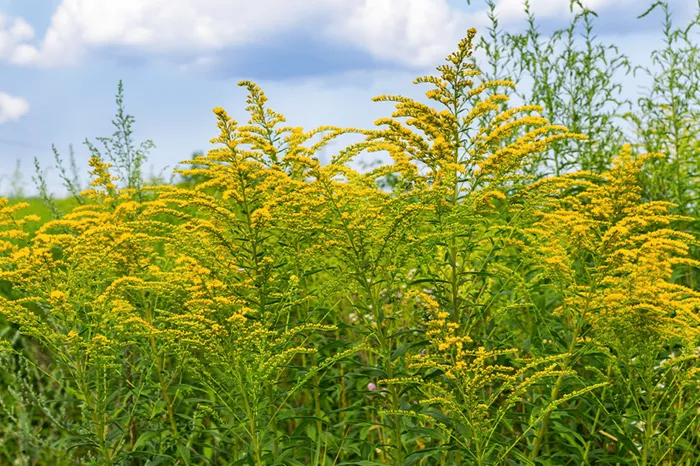Ragweed pollen is a common allergen that affects millions of people every year, particularly during the late summer and early fall months. This tiny, seemingly innocuous substance can trigger severe allergic reactions, leading to discomfort and reduced quality of life for many. In this comprehensive guide, we will explore the nature of ragweed pollen, its geographical distribution, the biological mechanism behind its allergenic effects, and strategies for management and prevention.
Ragweed refers to any of the rough annual herbs belonging to the genus Ambrosia in the aster family. These plants are especially known for producing highly allergenic pollen, which becomes airborne and can affect individuals far from the actual plants.
What is Ragweed?
Ragweed plants are typically found in rural as well as urban areas. They thrive in fields, along roadsides, in vacant lots, and at riverbanks. The plants are hardy and can grow in poor soil conditions, making them common weeds that are difficult to eradicate once established.
The Pollen Production Cycle
Ragweed plants begin to pollinate in the late summer, usually in August, and continue until the first hard frost, typically in November in many northern regions. A single ragweed plant can produce up to one billion pollen grains in a single season. These grains are extremely light and can travel great distances on the wind, which explains their wide dispersal and potent allergenic effects.
Why is Ragweed Pollen a Problem?
Ragweed pollen is a major cause of hay fever (allergic rhinitis), which can significantly affect individuals’ quality of life. Its prevalence and the ease with which it becomes airborne contribute to widespread seasonal allergies.
The Allergenic Properties of Ragweed Pollen
Ragweed pollen grains contain proteins that trigger immune responses in people who are allergic to them. When these individuals inhale the pollen, their bodies identify the pollen proteins as harmful invaders, leading to an allergic reaction.
Symptoms of Ragweed Allergy
Common symptoms of ragweed pollen allergy include:
1. Sneezing
2. Runny or stuffy nose
3. Itchy eyes, nose, and throat
4. Worsening of asthma symptoms
Geographical Distribution of Ragweed
Ragweed is predominantly found in the United States, particularly in the Midwest and Eastern states. However, it is also present in many parts of Europe, and its distribution is expanding, partly due to climate change.
Spread and Habitat
Ragweed thrives in sunny, open environments. Disturbed soils, such as those found at construction sites or along roadways, are particularly favorable for ragweed growth. Urbanization and agricultural activities that disturb land surfaces can encourage the spread of ragweed.
Climate Change and Ragweed Proliferation
Research indicates that rising temperatures and increased levels of carbon dioxide in the atmosphere contribute to longer ragweed pollen seasons and increased pollen production. This can exacerbate the symptoms of those allergic to ragweed.
Diagnosing Ragweed Allergies
Proper diagnosis of ragweed allergy is essential for effective management and treatment.
Allergy Testing
Skin prick tests and blood tests can determine if an individual is allergic to ragweed pollen. These tests measure the immune system’s response to the pollen, confirming the allergy if positive reactions occur.
Treatment Options for Ragweed Allergies
There are several treatment options available to help manage the symptoms of ragweed allergies.
Medications
Antihistamines, decongestants, and nasal corticosteroids are commonly used to relieve the symptoms of ragweed allergies. These medications can help to control sneezing, itching, congestion, and other discomforts associated with allergic reactions.
Immunotherapy
Allergy shots (subcutaneous immunotherapy) and sublingual tablets are forms of immunotherapy that can be effective in treating ragweed allergies. These treatments work by gradually desensitizing the body’s immune system to ragweed pollen.
Preventive Measures and Lifestyle Adjustments
1. Managing exposure to ragweed pollen is crucial for reducing allergic reactions during the ragweed season.
2. Avoiding Exposure
3. Monitor pollen forecasts and try to stay indoors when pollen counts are high.
4. Use air purifiers and keep windows closed during the ragweed season to reduce indoor pollen levels.
5. Shower and change clothing after spending time outdoors to remove pollen from the body and hair.
Landscaping and Gardening Choices
Removing ragweed plants and choosing garden plants that do not aggravate allergies can also help reduce exposure. Regular mowing of lawns and maintenance of green spaces can limit the growth of ragweed.
Conclusion
Ragweed pollen is a significant allergen affecting millions of people each season. Understanding the nature of ragweed, its allergenic properties, and how to manage exposure can help mitigate the impact of this pervasive allergen. By combining medical treatments with strategic lifestyle adjustments, individuals suffering from ragweed allergies can enjoy greater comfort and improved quality of life during allergy season. Through ongoing research and public health initiatives, there is hope that the burden of ragweed allergies can be further reduced in the future.
[inline_related_posts title=”You Might Be Interested In” title_align=”left” style=”list” number=”6″ align=”none” ids=”8161,8158,8155″ by=”categories” orderby=”rand” order=”DESC” hide_thumb=”no” thumb_right=”no” views=”no” date=”yes” grid_columns=”2″ post_type=”” tax=””]
































